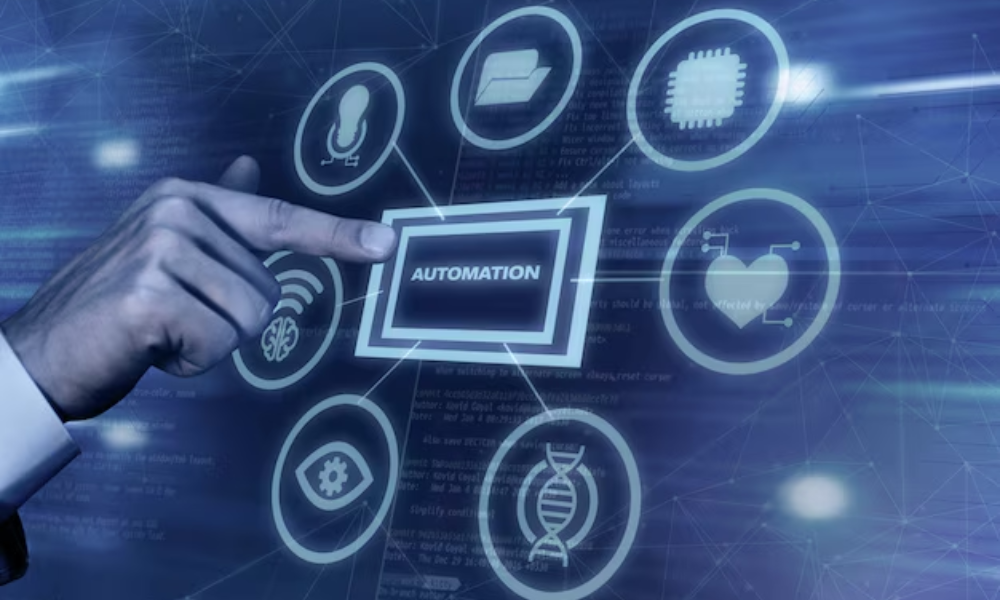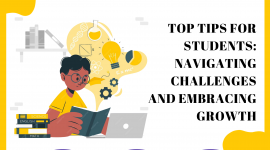In recent years, AI-driven learning tools have grown far beyond the realm of science fiction. Today, they’re part of everyday life—shaping how students learn, teachers teach, and parents support their children’s academic journeys. Many competitors, like Edutopia, emphasize time-saving benefits for teachers and highlight a handful of AI apps; others, such as the IU blog and BuiltIn, showcase impressive technical capabilities. But here, we go a step further by focusing on how these advanced tools fit into the personal growth, emotional well-being, and academic success of learners at different stages—particularly teenagers and college students who must navigate increasingly complex educational landscapes, and parents who want to ensure their children’s success. Around the world, institutions—including international schools in India—are implementing such tools to support a culturally diverse student body, ensuring access to high-quality, tailored learning experiences.
Why Parents Should Care About AI-Driven Learning Tools

For parents, it’s easy to feel disconnected from the fast-paced changes in education. Traditional textbooks are giving way to online courses, video lectures, and now, AI-driven intelligent tutoring systems. Rather than simply listing tools like our competitors do, we integrate advice on how parents can proactively choose and monitor these AI platforms. By investing time in understanding these technologies, parents can:
- Build stronger relationships with their children’s academic lives by discussing educational goals, tools, and progress.
- Identify personalized solutions that support unique learning styles and interests.
- Track progress through real-time analytics, ensuring that their children are neither overwhelmed nor under-challenged.
- Provide emotional and moral support, helping children develop self-confidence alongside academic competence.
In regions where globalized curricula are standard—like within international schools in India—parents can use these tools to ensure their children receive a well-rounded education that aligns with international benchmarks. This encourages intercultural understanding and sets the stage for future global opportunities.
Tailoring Learning to Individual Needs

Unlike competitor articles that primarily address teachers streamlining their workload, we spotlight how AI-driven tools benefit learners directly. Imagine a college student juggling part-time work and a full course load, or a high schooler struggling with math. These tools can:
- Adaptive Learning: AI analyzes each student’s strengths and weaknesses, adjusting the difficulty level of material and pacing for optimal progress.
- Personalized Content: Tailored recommendations help learners focus on concepts that need attention, making study sessions more productive.
- Real-Time Feedback: Instant feedback from AI tutors guides improvements and reduces frustration.
We emphasize emotional resonance, ensuring that students don’t feel like they’re facing tough subjects alone. Instead, they have a virtual mentor—one that’s always available, patient, and supportive. This personalized approach works as effectively in local schools as it does in international schools in India, where diverse classrooms benefit from customized learning paths that respect cultural backgrounds and language preferences.
Transforming the Student Experience at the College Level

College students face unique academic and personal hurdles. Whereas competitor articles offer generic AI tool listings, we provide deeper insight into how these tools cultivate essential life skills. Consider the following advantages for college-goers:
- Efficient Time Management: AI-driven platforms help organize study schedules based on upcoming deadlines, difficulty levels, and personal cognitive patterns.
- Research Assistance: Advanced AI-driven research tools can pinpoint credible sources, analyze large data sets, and break down complex topics into comprehensible chunks.
- Career-Oriented Learning Paths: Some AI-driven tools provide curated learning paths aligned with career goals—something rarely highlighted by competitors who focus more on immediate academic gain. We highlight this long-term benefit to resonate with parents who want their children to have a clear professional trajectory and teenagers who dream of future careers.
Whether a student attends a traditional college campus or an international school in India with advanced pre-college programs, these AI-driven strategies equip them with the tools needed to thrive in higher education and beyond.
Engaging Teenagers Through Interactive Platforms

Teenagers, in particular, benefit from AI-driven learning tools that make education feel less like a chore and more like an exciting journey. Where competing articles often focus on a list of tools, here we emphasize the holistic approach—combining entertainment, practical skill-building, and mentorship.
- Gamified Learning: Many AI-driven platforms incorporate elements of gaming—points, badges, and levels—making learning fun and competitive.
- Peer Interaction: Some AI platforms include community forums or collaborative projects, fostering social bonds that enhance learning experiences.
- Life Skills Integration: Beyond just test prep, these tools help develop critical thinking, communication skills, and digital literacy—crucial competencies for the modern world.
By guiding teenagers toward platforms that resonate with their interests, we help them become self-driven learners, reducing the need for constant parental supervision. In environments where peers hail from diverse backgrounds, such as international schools in India, these community-driven AI platforms help teenagers appreciate cultural diversity, enhance their global perspective, and build confidence.
Beyond Standardized Tests: Broadening Academic Horizons

Traditional education often boils down to exam performance, but AI-driven learning tools have the potential to broaden horizons well beyond standardized tests. Unlike competitor articles that mostly highlight tools for classroom efficiency or test prep success, we focus on holistic personal development.
These tools encourage learners to:
- Explore New Subjects: With AI’s personalized recommendations, students can delve into fields like astrophysics, marine biology, or digital marketing that may not be covered extensively in the standard curriculum.
- Develop Creative Problem-Solving Skills: Adaptive platforms prompt students to think critically and apply knowledge to real-world scenarios, nurturing inventiveness.
- Cultivate Lifelong Learning: By encouraging curiosity and continuous skill improvement, AI-driven learning becomes a lifelong endeavor rather than a short-term sprint to an exam date.
Such broad enrichment is beneficial not only for students in traditional settings but also for those enrolled in international schools in India, where diverse curricula and global perspectives are integral parts of the learning environment.
A Brief Comparison of AI-Driven Tools and Their Key Features

Below is a comparative table that aims to do more than just list tools. We add clarity on when and how these AI solutions serve parents, teenagers, and college students, something the competition does not comprehensively cover:
| Type of AI-Driven Learning Tool | Key Features | Best For | How It Differs from Competitors’ Focus |
| Adaptive Tutoring Systems | Personalized lesson plans, instant feedback, skill gap identification | Middle & High School Students | Competitors show teachers how these tools save time; we show parents/students how these tools build confidence and mastery. |
| AI-Powered Research Assistants | Smart data searches, summarizing key concepts, credibility checks | College Students & Advanced High Schoolers | Others emphasize technical features; we highlight long-term career and research skill-building. |
| Gamified Learning Platforms | Points, badges, storytelling elements for engagement | Teenagers & Younger Learners | Competitors list tools; we connect gamification to emotional well-being, motivation, and community building. |
| Career-Oriented AI Paths | Curated career-based curriculum recommendations, skill mapping | College Students & Career-Ready Teens | Others rarely talk about career alignment; we place it front and center to address future goals. |
| Holistic Enrichment Tools | Cross-disciplinary learning, cultural exploration, creative challenges | All Ages, Especially Curious Learners | While competitors focus on immediate academic tasks, we spotlight holistic growth and curiosity. |
This structured approach ensures that readers can clearly see how these AI-driven learning tools meet their specific needs. Moreover, these solutions are increasingly being incorporated worldwide—from local community schools to international schools in India, where they’re helping shape a generation of globally-minded, well-rounded learners.
Overcoming Barriers and Embracing Accessibility

Unlike competitor articles that typically highlight tools available in certain markets or for specific educator groups, we stress the importance of accessibility and inclusivity for parents who worry about equal opportunities. AI-driven learning tools are now:
- Multilingual and Culturally Sensitive: Students can learn in their native language or explore content in a second language, broadening their cultural horizons. This is particularly important in international schools in India, where a diverse student body may require content that respects multiple languages and cultural references.
- Accessible Anytime, Anywhere: Whether in a rural area or an urban center, these tools make quality education widely available, eliminating geographical constraints.
- Financially Flexible: Some platforms offer tiered pricing, scholarships, or free basic features, ensuring families of various economic backgrounds can benefit.
This focus on inclusivity ensures that everyone—regardless of financial or cultural background—can gain from these innovations, a detail that competitors often overlook.
The Role of Parents and Mentors in AI-Driven Education

While AI can personalize and adapt learning, it cannot replace the warmth, empathy, and moral guidance of a parent or mentor. Competitors talk about tools making teacher life easier, but we direct attention to the supportive role parents can play:
- Shared Learning Experiences: Parents and students can explore new topics together, discussing insights, and building understanding through family conversations.
- Emotional Check-Ins: Regular chats about progress and challenges ensure that children remain engaged and motivated, reducing stress and burnout.
- Setting Boundaries and Goals: Parents can help set academic goals, daily study limits, and celebrate achievements—turning learning into a collaborative effort rather than a solitary task.
For families attending international schools in India, this mentoring role is even more critical. Parents and mentors can help students navigate a multicultural environment, connect new knowledge with global contexts, and ensure that AI complements, rather than replaces, genuine human interaction.
Ethical Considerations and Responsible Use of AI

Unlike competitor articles that may gloss over ethics in favor of convenience and efficiency, we place a strong emphasis on responsible use. AI-driven learning tools handle sensitive data, and as parents, teenagers, and college students embrace these platforms, they must remain vigilant:
- Data Privacy: Ensure that the chosen tools prioritize data protection. Reviews, privacy policies, and secure login features help maintain students’ trust and safety.
- Balanced Screen Time: Over-reliance on digital resources can be counterproductive. Setting limits ensures technology remains a tool, not a distraction.
- Informed Tool Selection: Not all AI-driven learning tools are created equal. Families should research, read user testimonials, and perhaps even test out free versions before committing.
By prioritizing ethical considerations, we address long-term well-being, ensuring that learners benefit from technology without becoming overly dependent or vulnerable. Such considerations hold true everywhere, including international schools in India, where data privacy, cultural sensitivity, and responsible usage remain paramount for building a trustworthy educational environment.
Embracing the Future: Long-Term Impact and Skill Building

Where competitors highlight immediate academic gains, we underscore the long-term value AI-driven learning tools bring. Today’s learners will shape tomorrow’s workforce, and the skills they develop now—critical thinking, adaptability, cultural literacy—will define their success as adults.
- Continuous Learning Mindset: AI tools inspire students to become self-directed learners who crave knowledge beyond the classroom walls.
- Interdisciplinary Thinking: By connecting different subjects and showing how they intersect, these tools foster a mindset that thrives in a complex, globalized world.
- Future-Proofing Skills: As automation and AI reshape industries, young people adept at learning with AI will excel in new job markets, ready to tackle emerging challenges and roles that don’t even exist yet.
In fast-evolving educational landscapes, including international schools in India, embracing AI-driven learning tools prepares students for a future where knowledge, adaptability, and cultural competence form the backbone of success.
Making Informed Choices: Tips for Parents and Students

Unlike competitor articles that may simply list popular AI tools without context, we equip parents, teenagers, and college students with clear decision-making strategies:
- Define Goals: Before exploring tools, identify what you hope to achieve—improved grades, test prep, skill-building, career exploration, or adapting to the curriculum of international schools in India.
- Assess Features: Look for tools offering adaptive learning, gamification, and community support. The right feature set ensures engagement and sustained interest.
- Prioritize Credibility: Select platforms from reputable organizations, read reviews, and consider pilot programs or short-term subscriptions before committing fully.
- Maintain Balance: Encourage a mix of digital and offline learning experiences. AI should complement, not replace, human interactions and real-world problem-solving.
- Involve Everyone: Parents, mentors, and students should discuss their experiences regularly, making adjustments and celebrating achievements together.
Conclusion: Building a Meaningful Educational Journey
AI-driven learning tools are more than a convenience or a novelty—they represent a shift toward personalized, emotionally resonant, and future-focused education. Unlike competitor articles that focus heavily on efficiency or immediate academic returns, we shine a spotlight on the human aspect, family involvement, career readiness, ethical considerations, and lifelong learning. For parents, these tools are a way to participate meaningfully in their child’s educational journey; for teenagers and college students, they’re an empowering resource to unlock curiosity, creativity, and ambition.
By carefully selecting and mindfully using AI-driven learning tools, families can create a supportive, enriching environment that not only improves academic performance but also prepares young minds to thrive in an ever-changing world. In a global context—whether at local community schools or international schools in India—these advancements ensure that the next generation of learners emerges stronger, more capable, and more empathetic than ever before.









